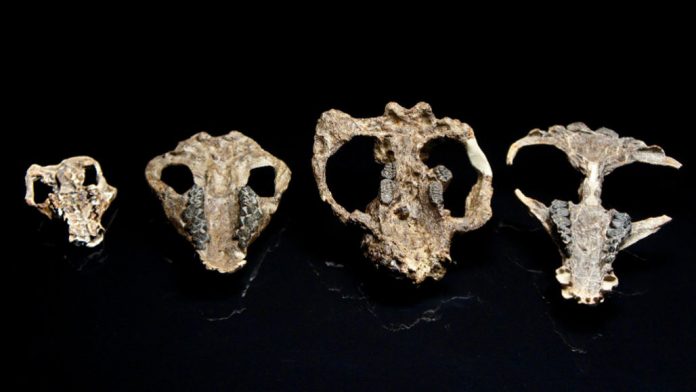Researchers know how dinosaurs and nearly 75% of all species on Earth were wiped out 66 million years ago: A meteorite larger than Mount Everest slammed into what is now Mexico.
But what has been less clear was how life recovered — and how long it took — in the critical wake of the devastating Cretaceous–Paleogene extinction event, which gave birth to the rise of mammals and eventually mankind. Less clear, that is, until now.
Researchers from the Denver Museum of Nature & Science spent three years combing through Corral Bluff Open Space, just east of Colorado Springs, and examining thousands of concretions, the term for fossils cocooned inside rocks. What was uncovered is a picture of the origin of modern life and how mammals bounced back that has never truly been understood before.
“If you had to choose one million years in Earth’s history that you really want to look at carefully, this would be it,” says palaeobotanist Ian Miller from the Denver Museum of Nature & Science.
The Denver Basin, an area extending eastwards from Denver in the north and Colorado Springs in the south, is not new to palaeontologists, who have been exploring the area for over 100 years. But in 2016, Tyler Lyson from the Denver Museum changed the way he searched for fossils at Corral Bluffs in the southern part of the basin.
Instead of scanning the landscape for bones poking out of the ground, Lyson, who led the new study, looked for concretions – egg-shaped rocks that can form around fossils.
“That’s how we cracked the code and blew it wide open. I split open a concretion and saw a mammal skull smiling back at me,” he says. “Then I looked around and saw concretions just littering the landscape and was like, ‘Oh man, here we go’.”
Lyson and his colleagues unearthed thousands of fossils from mammals, reptiles and plants at Corral Bluffs, in sites that span the first million years after the mass extinction. These, along with pollen samples, were then used to reconstruct the process of ecosystem recovery that took place.
The work shows that during the first 100,000 years, mammals were already beginning to diversify.
At 300,000 years after the asteroid struck, mammals got bigger, too. Maximum body size increased three-fold and was accompanied by an increase in diversity of large plants.
More large animals crop up around 700,000 years post-extinction, at a time that energy-rich plants, such as legumes, first appear in the record.
Both of these bursts in plant and animal life coincided with pulses of warming.
“We documented changes in the landscape after the impact, from a world dominated by palms to a world dominated by a more diverse group of trees. And then we saw the animal species change in lockstep fashion,” says Miller.
“Their record is particularly strong in that it is really densely sampled through that first million years,” says palaeontologist Tom Williamson from the New Mexico Museum of Natural History & Science, who wasn’t involved in the study. “We can’t say that for really anywhere else, so that is pretty spectacular.”
It will be interesting, Williamson adds, to see if they can get similar records from elsewhere in western North America, including in the San Juan Basin where he works.















